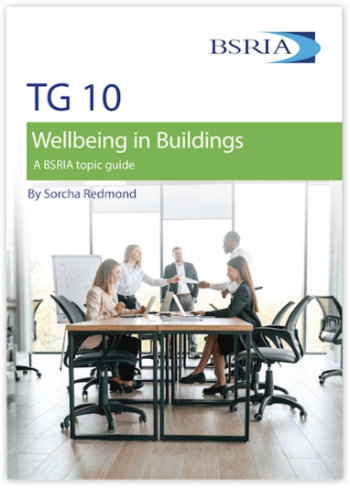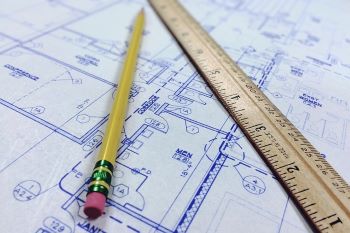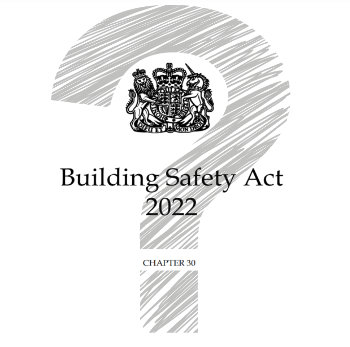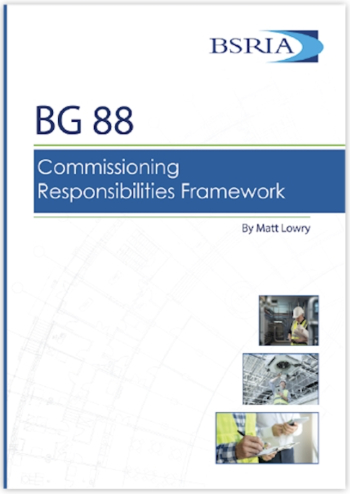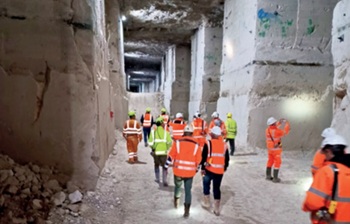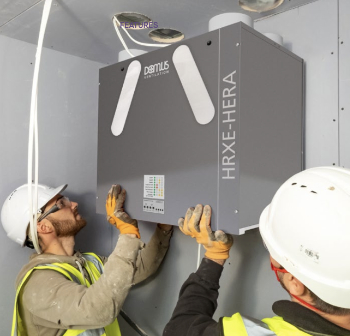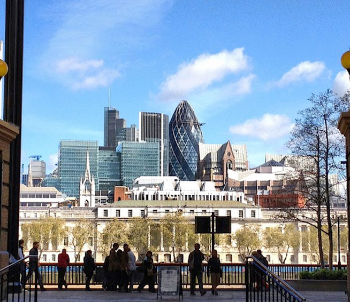Landings in buildings
Landings are level platforms found at the top or bottom of flights of stairs. Intermediate landings may be found part way up flights of stairs where there is an intermediate level, where there is a change in direction of the flight of stairs, or where there is a long flight of stairs.
Approved document K protection from falling, collision and impact, requires that there is a landing at the top and bottom of every flight, with a width and length at least as great as the smallest width of the flight of stairs.
Landings should be clear of permanent obstructions. They may have doors to cupboards or ducts that open over them, but these should remain closed in normal use. Other doors may swing across landings in dwellings, but only as shown below.
A headroom of at least 2m should be provided on all landings.
Where there are more than 36 risers in consecutive flights of stairs, Approved Document K requires that there is at least one change of direction, with a landing that has a minimum length equal to the width of the stairs. Landings in building other than dwellings should be at least 1200mm long.
For buildings other than dwellings, the maximum number of risers should be 16 for utility stairs, and 12 for general access stairs (or 16 in exceptional circumstances where the plan area is restricted). Landings in buildings other than dwellings should have suitable handrails on each side.
Landings may also be found at the top, bottom and along the length of ramps. They must be at least as long as the width of the ramp. For buildings other than dwellings, they must be at least 1200mm long at the top and bottom of the ramp, and at least 1500mm long for intermediate landings.
Approved Document M sets out additional guidance and requires the provision of landings as rest areas for wheelchair users and people with walking difficulties, and to provide space for wheelchair users to stop and open doors.
Approved Document M also refers to landings in front of lifts.
Approved Document B sets our additional requirements in relation to fire safety.
NB see also: Soft landings.
[edit] Related articles on Designing Buildings Wiki
- Ancillary area.
- Approved Document B.
- Approved Document K.
- Approved Document M.
- Banister.
- Building regulations.
- Escalator.
- Finial.
- Flight.
- Guarding.
- Inclusive design.
- Lifts.
- Lobby.
- Maximum length of a flight of stairs.
- Newel post.
- Railings.
- Ramps.
- Spiral stairs and helical stairs.
- Stairs.
- Stairs going.
- Stairs nosing.
- Stairs riser.
- Stairs string.
- Stairs tread.
- Stairlift.
- Types of stairs.
- Wheelchair platform stairlifts.
Featured articles and news
Classroom electrician courses a 'waste of money'
Say experts from the Electrical Contractors’ Association.
Wellbeing in Buildings TG 10/2025
BSRIA topic guide updates.
With brief background and WELL v2™.
From studies, to books to a new project, with founder Emma Walshaw.
Types of drawings for building design
Still one of the most popular articles the A-Z of drawings.
Who, or What Does the Building Safety Act Apply To?
From compliance to competence in brief.
The remarkable story of a Highland architect.
Commissioning Responsibilities Framework BG 88/2025
BSRIA guidance on establishing clear roles and responsibilities for commissioning tasks.
An architectural movement to love or hate.
Don’t take British stone for granted
It won’t survive on supplying the heritage sector alone.
The Constructing Excellence Value Toolkit
Driving value-based decision making in construction.
Meet CIOB event in Northern Ireland
Inspiring the next generation of construction talent.
Reasons for using MVHR systems
6 reasons for a whole-house approach to ventilation.
Supplementary Planning Documents, a reminder
As used by the City of London to introduce a Retrofit first policy.
The what, how, why and when of deposit return schemes
Circular economy steps for plastic bottles and cans in England and Northern Ireland draws.
Join forces and share Building Safety knowledge in 2025
Why and how to contribute to the Building Safety Wiki.
Reporting on Payment Practices and Performance Regs
Approved amendment coming into effect 1 March 2025.









